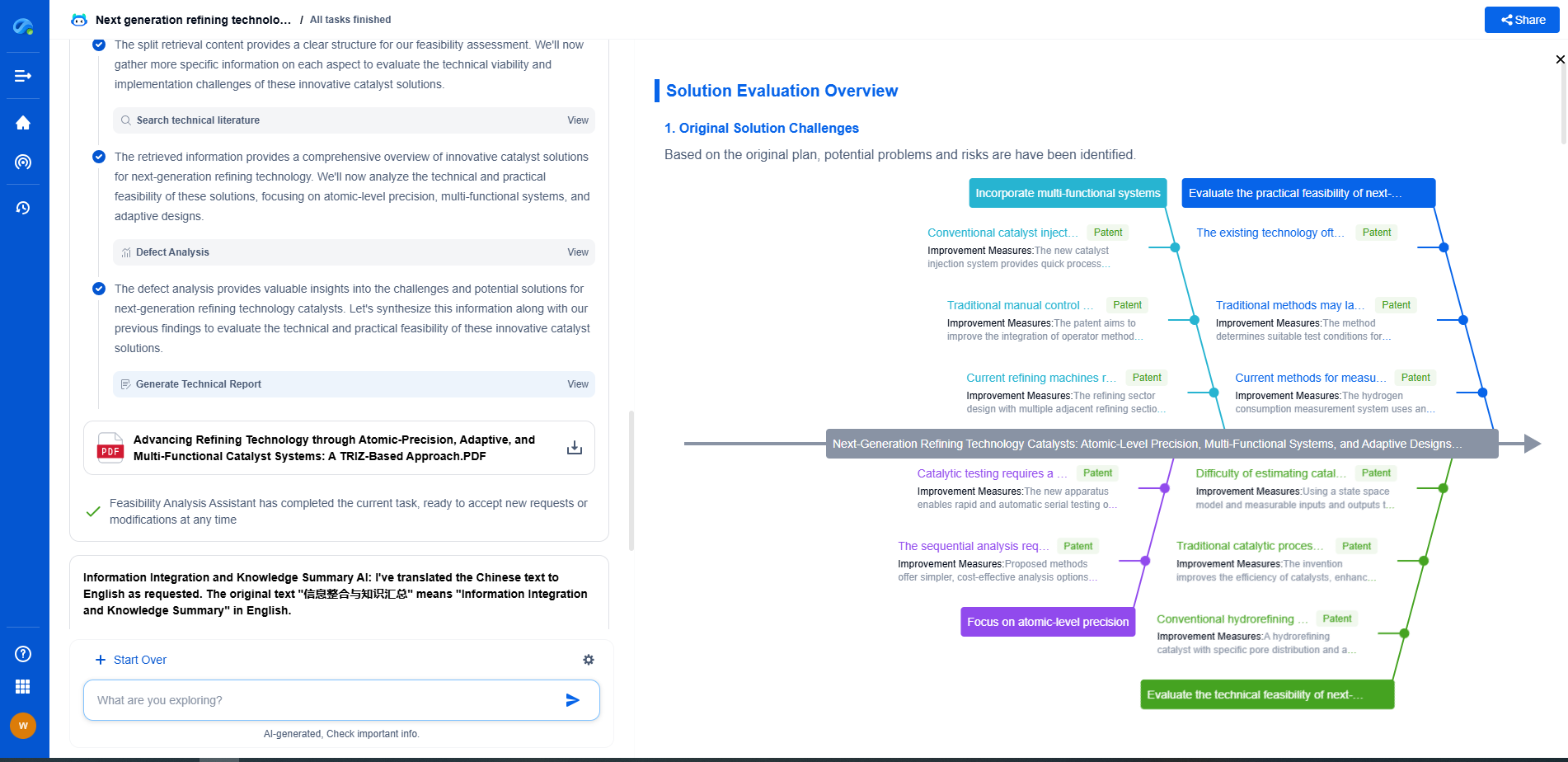Neuromorphic Chips for Low-Power Grid Edge AI
JUN 26, 2025 |
Neuromorphic chips are a revolutionary development in the field of artificial intelligence (AI) and computing. They are designed to mimic the human brain's neural architecture, enabling them to process information efficiently and with far less power than traditional computing architectures. These chips stand out due to their ability to handle complex cognitive tasks while significantly reducing energy consumption. As AI continues to evolve and integrate into various aspects of our daily lives, the demand for energy-efficient solutions is becoming ever more critical. Neuromorphic chips offer a promising path forward, particularly for applications at the grid edge.
AI at the Grid Edge
The grid edge represents a critical boundary where energy systems and consumers interact. It includes devices and technologies located at or near the end-users of the electrical grid—such as smart meters, renewable energy sources, and battery storage systems. As the demand for decentralized energy solutions grows, there is a pressing need for intelligent systems that can operate efficiently at these points. AI has the potential to optimize energy usage, manage distributed energy resources, and improve overall grid resilience. However, conventional AI solutions can be power-hungry, which makes them less suitable for deployment at the grid edge.
Advantages of Neuromorphic Computing
Neuromorphic chips offer several advantages for implementing AI at the grid edge:
1. **Energy Efficiency**: Neuromorphic chips are designed to operate with minimal power consumption. They emulate the brain's synaptic activity, which allows them to process information in parallel and with great efficiency. This feature is crucial for grid edge applications where resources may be limited, and energy efficiency is paramount.
2. **Real-Time Processing**: These chips can process information in real time, making them ideally suited for applications that require immediate decision-making and response. At the grid edge, this capability can enhance the management of energy flow, detect anomalies, and contribute to the stability of the grid.
3. **Scalability and Adaptability**: Neuromorphic systems can easily be scaled to meet the specific needs of different applications. Whether it's for a small-scale residential setup or a large industrial plant, these chips can adapt to various requirements, making them versatile for diverse grid edge applications.
Challenges and Considerations
Despite their promising potential, the integration of neuromorphic chips into grid edge AI systems faces several challenges. First, the technology is still in its developmental stages, and widespread adoption will require significant advancements in both hardware and software. Additionally, there are concerns related to the interoperability of neuromorphic systems with existing grid technologies. Ensuring compatibility and seamless integration will be crucial to realizing the full benefits of these chips.
Furthermore, there is a need for a robust framework to support the deployment of neuromorphic technologies. This includes the development of new algorithms and models that can fully leverage the capabilities of neuromorphic chips. Research and collaboration between academia, industry, and governments will play a vital role in overcoming these challenges.
Future Prospects
The future of neuromorphic chips in grid edge AI is promising. As technology advances, we can expect to see more efficient, intelligent, and autonomous energy systems. Neuromorphic computing has the potential to transform the electrical grid by enabling smarter and more sustainable energy management practices. This can lead to significant reductions in energy consumption, lower carbon emissions, and improved energy security.
In conclusion, neuromorphic chips hold the key to unlocking the full potential of AI at the grid edge. By providing low-power, real-time processing capabilities, they offer a viable solution to the energy challenges facing modern grids. While there are still hurdles to overcome, the ongoing research and development in this field indicate a bright future for neuromorphic computing in the realm of grid edge AI. As we move forward, embracing these innovative technologies will be crucial to building a more resilient, efficient, and sustainable energy system for the future.
Stay Ahead in Power Systems Innovation
From intelligent microgrids and energy storage integration to dynamic load balancing and DC-DC converter optimization, the power supply systems domain is rapidly evolving to meet the demands of electrification, decarbonization, and energy resilience.
In such a high-stakes environment, how can your R&D and patent strategy keep up?
Patsnap Eureka, our intelligent AI assistant built for R&D professionals in high-tech sectors, empowers you with real-time expert-level analysis, technology roadmap exploration, and strategic mapping of core patents—all within a seamless, user-friendly interface.
👉 Experience how Patsnap Eureka can supercharge your workflow in power systems R&D and IP analysis. Request a live demo or start your trial today.
- R&D
- Intellectual Property
- Life Sciences
- Materials
- Tech Scout
- Unparalleled Data Quality
- Higher Quality Content
- 60% Fewer Hallucinations
Browse by: Latest US Patents, China's latest patents, Technical Efficacy Thesaurus, Application Domain, Technology Topic, Popular Technical Reports.
© 2025 PatSnap. All rights reserved.Legal|Privacy policy|Modern Slavery Act Transparency Statement|Sitemap|About US| Contact US: help@patsnap.com

